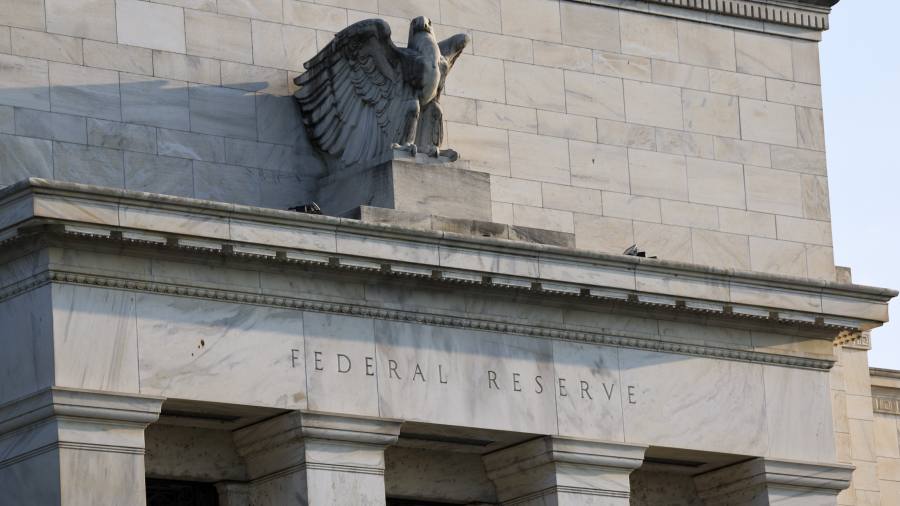[ad_1]
The UK government’s new fiscal plan has increased economic uncertainty and raised the odds of a global recession, a top official at the US central bank warned after sterling touched a record low.
Speaking while the pound whipsawed as traders digested UK chancellor Kwasi Kwarteng’s £45bn tax-cutting package, Raphael Bostic, president of the Atlanta branch of the Federal Reserve, said the plan “has really increased uncertainty and . . . caused people to question what the trajectory of the economy is going to be”.
Asked whether the plan and resulting volatility would increase the chances that the world economy tips into recession, Bostic said: “it doesn’t help”.
“A basic tenet of economics is more uncertainty leads to less engagement by consumers and businesses,” he said. “The key question will be, what does this mean for ultimately weakening the European economy, which is an important consideration for how the US economy is going to perform.”
Bostic’s comments came on the heels of a warning from Susan Collins, president of the Fed’s Boston branch, who said an external shock could tip the US economy into a recession.
Speaking at an event on Monday, Collins, whose tenure began in July, highlighted the challenges facing the Fed as it confronts price pressures that have proven much harder to root out than anticipated while spreading to a broad range of sectors.
“A significant economic or geopolitical event could push our economy into a recession as policy tightens further,” said Collins, who is a voting member on the Federal Open Market Committee this year and the first black woman to lead one of the bank’s branches.
She added: “Moreover, calibrating policy in these circumstances will be complicated by the fact that some effects of monetary policy work with a lag.”
Collins and Bostic are among the first top Fed officials to make public remarks since the central bank last week implemented its third consecutive 0.75 percentage point rate rise and signalled further large increases to come.
Most officials see the federal funds rate rising to 4.4 per cent by year-end before peaking at 4.6 per cent in 2023. It hovers between 3 per cent and 3.25 per cent.
Also on Monday, Loretta Mester, president of the Cleveland Fed, outlined the very high bar for the Fed to step back from its current campaign to tighten monetary policy, which is the most aggressive since 1981.
“Wishful thinking cannot be a substitute for compelling evidence. So before I conclude that inflation has peaked, I will need to see several months of declines in the month-over-month readings,” she said at an event hosted by the Massachusetts Institute of Technology.
Collins, meanwhile, said it is “quite likely that inflation is near peaking and perhaps may have peaked already”.
However, she noted there were some limitations to the Fed’s tools, particularly with regard to relieving supply-related bottlenecks and labour shortages that have helped push inflation up to its highest level in about four decades.
Like other officials, Collins thinks the jobs losses accompanying this tightening cycle could be less severe than in the past.
Because employers have struggled to find workers — resulting in one of the tightest labour markets in decades — most officials see the unemployment rate rising only as high as 4.4 per cent in the coming years from 3.7 per cent.
“There’s a really good chance that if we have job losses, it’s going to be smaller than what we’ve seen in other situations, and that’s what I’m banking on,” Bostic said in an interview with CBS on Sunday.
“We’re going to do all that we can at the Federal Reserve to avoid deep, deep pain, and I think there are some scenarios where that’s likely to happen,” he said.
[ad_2]
Image and article originally from www.ft.com. Read the original article here.

